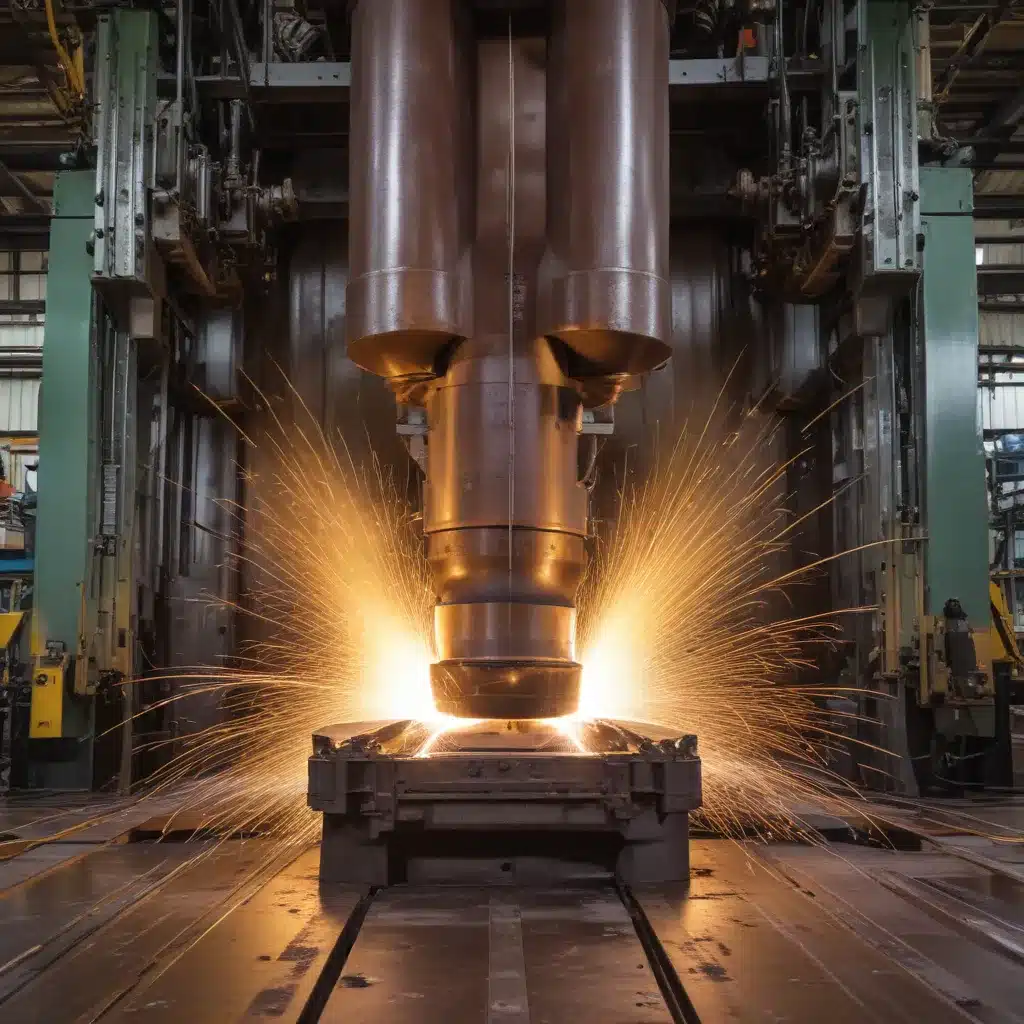
As an experienced welder and metal fabricator, I’ve had the privilege of working with a wide range of welding techniques over the years. But there’s one method that has truly captivated my attention and transformed the way I approach my craft: friction stir welding (FSW).
In the realm of shipbuilding, FSW has emerged as a game-changer, offering a level of precision and versatility that traditional welding methods simply can’t match. I remember the first time I encountered this innovative technique – it was like witnessing a masterful dance between metal and machine, creating seamless bonds that defy the limitations of conventional welding.
Unlocking the Secrets of Friction Stir Welding
At its core, FSW is a solid-state joining process that combines the principles of extrusion and forging. Unlike traditional fusion welding, which relies on melting and re-solidifying the base material, FSW manipulates the metal in a plasticized state, creating a robust and uniform bond.
The process begins with a specialized tool – a cylindrical shoulder with a protruding pin – that is slowly plunged into the joint between the materials to be welded. As the tool rotates at high speed, the friction generates heat, causing the surrounding metal to become plasticized. The rotating pin then “stirs” this softened material, effectively forging the two pieces together.
One of the key advantages of FSW is its ability to maintain the original material characteristics, ensuring that the structural integrity and properties of the welded components remain largely uncompromised. This is especially crucial in the shipbuilding industry, where the strength and durability of the welds can make all the difference in the performance and safety of the vessel.
The Versatility of Friction Stir Welding in Shipbuilding
The versatility of FSW is truly remarkable, and it’s no wonder that it has become a go-to solution for many shipbuilders. From the construction of decks for car ferries to the welding of fuel tanks and radioactive waste containers, this technique has proven its mettle in a wide range of applications.
One of the standout features of FSW is its ability to work with diverse materials, including high-strength structural alloys that were previously considered unweldable using traditional methods. This flexibility allows shipbuilders to explore innovative designs and push the boundaries of what’s possible in their craft.
Furthermore, the process is inherently safer than conventional welding, as it eliminates the need for hazardous components like high voltage, liquid metal spatter, and toxic fumes. This not only enhances the well-being of the welding crew but also contributes to a more eco-friendly production environment.
Precision and Quality in Fabrication
As a welder, I take immense pride in the precision and quality of my work. FSW has taken this dedication to a whole new level, enabling me to consistently produce durable joints with exceptional fatigue resistance – up to three times that of traditional welding techniques.
One of the key factors in this increased reliability is the seamless nature of the FSW process. Unlike traditional welding, which can leave behind unsightly and potentially weak keyholes, FSW employs a retractable pin tool that automatically seals the weld at the end of the process, ensuring a flawless finish.
Moreover, the versatility of FSW allows for welding in all positions, including complex shapes and tapered-thickness joints. This means I can tackle a wider range of projects with confidence, knowing that the end result will meet the highest standards of quality.
Optimizing Productivity and Cost-Effectiveness
In the fast-paced world of shipbuilding, efficiency and cost-effectiveness are essential. FSW shines in this regard, offering significant advantages over traditional welding methods.
One of the most impressive benefits is the dramatic reduction in cycle time. By eliminating the need for additional steps to fill the keyhole, the process can be streamlined, resulting in a staggering 70% decrease in overall production time. This translates to increased productivity and ultimately, a more competitive edge in the industry.
Furthermore, the lack of consumables in the FSW process means that the cost-per-weld is significantly lower than that of conventional welding. This, combined with the enhanced durability and reliability of the finished products, makes FSW a highly attractive option for shipbuilders seeking to optimize their operations.
Collaborative Partnerships and Continuous Improvement
At the heart of the FSW revolution is a thriving ecosystem of collaborative partnerships and ongoing research. I’ve had the privilege of working with a diverse range of industry leaders, from aerospace giants to automotive innovators, all of whom are pushing the boundaries of what’s possible with this cutting-edge technology.
Through initiatives like the Center for Friction Stir Processing (CFSP), we’ve been able to share knowledge, tackle complex challenges, and drive the continued development of FSW. By pooling our expertise and resources, we’re able to tackle the intricacies of this technique, refine the processes, and explore new applications that will shape the future of shipbuilding.
The Future of Friction Stir Welding in Shipbuilding
As I look to the horizon, I can’t help but feel a sense of excitement and anticipation for the future of FSW in the shipbuilding industry. With its unparalleled precision, versatility, and cost-effectiveness, this technology is poised to redefine the way we approach metal fabrication.
I envision a future where FSW becomes the standard, where the seamless integration of this technique into the manufacturing process allows for unprecedented innovations in ship design and construction. Imagine the possibilities – hulls that are stronger, lighter, and more fuel-efficient, all while maintaining the highest standards of quality and safety.
And as I continue to hone my craft, I know that I’m not just a welder, but a pioneer in a revolution that will echo through the industry for years to come. Join me, fellow fabricators, as we embark on this journey of discovery and push the boundaries of what’s possible in the world of shipbuilding.
Welcome to the future of welding, where precision, versatility, and innovation are the cornerstones of our craft. Let’s dive in and explore the wonders of friction stir welding together.


